A 1970s dead mall is really dead; ghosts of Toys 'R' Us past; a 50-foot 'Christmas Story' leg lamp lights up the sky | Rolando's Roadside Roundup
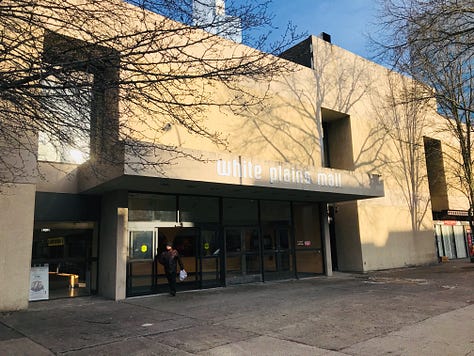


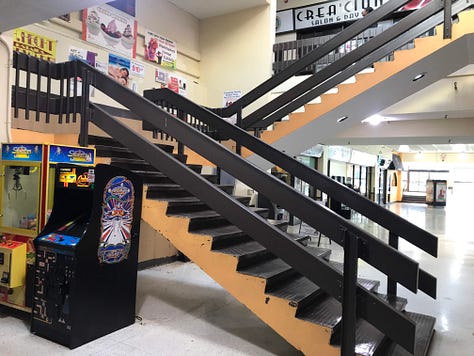
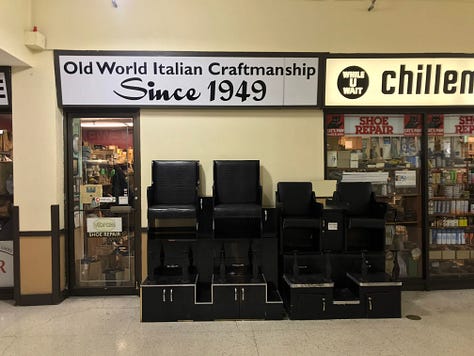
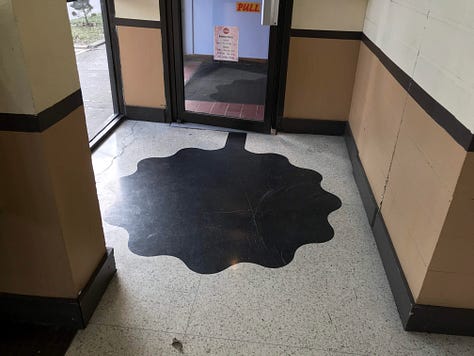
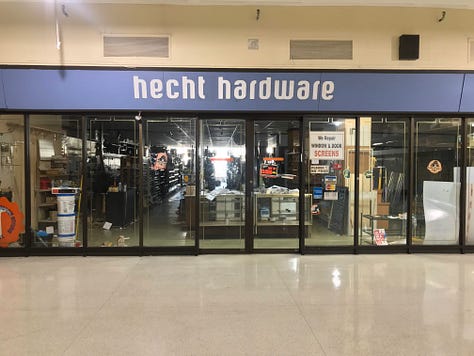
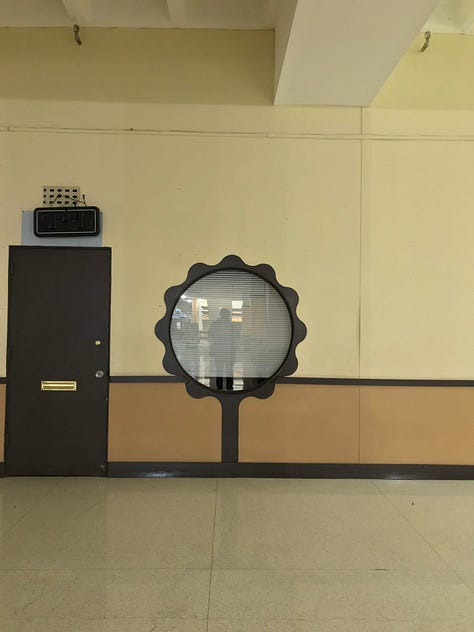

When I was a child, the White Plains Mall was my first introduction to the idea of a shopping mall. A smaller mall teeming with mom-and-pop businesses, some of which had been displaced elsewhere by urban renewal, this mall was not the kind with chain stores and massive retail anchors, a vast food court and gaggles of teenagers running amuck while engaging in awkward courtship rituals.
No, the White Plains Mall was less a mall of 1980s legend and more an enclosed shopping plaza, with hardware stores, restaurants, even a McDonald’s.
By 1980, with the comparatively enormous Galleria Mall open for business in this city just north of New York City, the White Plains Mall was already feeling dated. It never quite left the 1970s.
By the late 1980s, it was already in the middle stages of becoming a dead mall. I could sense the retail rigor mortis setting in even then, when the teenage coin collector that I was regularly shopped at the Coin Mint at the mall.
The arrival of the shiny new mall, The Westchester, in 1995 made the Galleria start to feel a little like the White Plains Mall. The cycles of retail are ruthless, and death, be it shocking and quick or sad and slow, is assured to all but the most nimble of retail operators.
The White Plains Mall lingered until very recently. I last visited — I should say, paid my respects — back in January 2019.
The Coin Mint was long gone, but some of the shops were hanging on, the DMV — the mall’s anchor at this point — was still there, and that McDonald’s — which might have been the last in business to use the “Town House” branding — was the liveliest place here on the cold afternoon I stopped by.
Happily for me, there were even traces of the abstract tree motif that was used throughout the mall, which had intrigued me since I was a kid. I doubt any of the designs were saved, embedded as they were in walls and floors.
Now, in a moment that was a long time coming, the mall is gone, bulldozed for a new housing development.
An article in the Wall Street Journal confirming that the mall was dead in more than just name really surprised me. On Thursday, the developer “will break ground on the project’s first phase, which will cost $350 million and includes two of four planned residential buildings. The first phase is scheduled to wrap up in early 2025, according to the developer,” writes reporter Kate King.
King interviewed retail expert Nick Egelanian, who envisions a future where dead malls really will be dead — as in gone and a memory, not a sad collections of shops on interminable death watch. And the living will be, well, living where the mall had long raged against the dying of the light.
“I think if you blink and open your eyes in 20 years, most of these malls will be gone, redeveloped into projects with a heavy emphasis on housing,” he told the Journal. “But it will be like watching paint dry between now and then. It’s a slow and expensive, halting process.”
A tour of Toys ‘R’ Us relics in New York City
On Sunday, I was feeling a little more nostalgic than usual and decided to document three locations that are remarkably preserved relics of Toys “R” Us, which went out of business in the United States back in 2018.
These locations are in New York City — and no, they do not include the Toys “R” Us kiosks that you can now find inside of Macy’s stores as part of a second revival effort for the toy brand in America.
My tour — along with maps to the locations — is over in The Retrologist’s Notebook, a new feature for paid subscribers of my newsletter.
You can sign up below! Your support of all I do is appreciated!
New roadside attraction alert! 50-foot version of “A Christmas Story” leg built in Oklahoma!
This story is going to knock your socks off.
The setting for “A Christmas Story” is Hohman, Indiana, a fictional stand-in for story author Jean Shepherd’s hometown of Hammond.
The house made famous in the movie — and now part of a museum complex that is famously for sale — is in Cleveland, Ohio.
And now, inspired by this infamous movie prop, a 40-foot-tall leg lamp resting atop a 10-foot-tall box marked “Fragile” — or is it Fra-Gee-Lay, as the Italians might say — has been installed neither in Hammond, Indiana nor in Cleveland, Ohio, but in Chickasha, Oklahoma.
The reason why, you will see, is a real kick.
Not long ago, Noland James died, a Chickasha visual arts professor who long before the film came out had built his own leg lamp — this one with two legs clad in black hose and a skirt, wearing pumps and topped with a lamp shade made out of a waste-paper basket.
The story goes that an unnamed fellow who would go on to work on the production team of “A Christmas Story” visited James’ office at the School of Visual Arts at Oklahoma State University and became obsessed with the lamp, so obsessed that Mr. James’ lamp became the inspiration for the one in the Christmas classic.
And that’s the rest of the story, as Paul Harvey might say.
Or is it?
Jean Shepherd’s 1966 novel that inspired the movie already describes a leg lamp, the “major award” that was mailed to Mr. Parker in a big wooden crate. Shepherd said he was inspired by an old illuminated Nehi soda advertisement that featured a woman’s legs.
And the movie’s production designer, Reuben Freed, says he was inspired by a lamp his mom owned, Roadside America adds in an excellent article.
Well, all of this is making me a little wobbly around the knees. Adding to that sense is the fact that a fellow named Tim Elliot had for a few years been championing the construction of a towering “A Christmas Story” leg lamp for his hometown of — you guessed it — Chickasha, Oklahoma. Elliot was campaigning for this without realizing that Professor James had built his own leg lamp in this very town.
The town leaders at the time just weren’t interested in Elliot’s big idea. But it turns out Elliot had an ally in Professor James, who was in hospice and had been trying to reach out to Elliot — through Elliot’s OWN daughter in law, who was caring for the ailing leg-lamp creator! (What are the odds?)
James wanted to tell Elliot about his leg lamp and how he though it inspired the one in the movie, Roadside America explains. But Elliot blew the professor off, James died and the leg story finally got out in the professor’s obituary, which, naturally, went viral.
Suddenly, everyone in town was interested in Elliot’s lamp idea.
Is your head spinning yet?
Rather than try to settle the matter here, I’ll say that doing so is beside the point. I’m simply glad that in this world, there exists a towering massive porcelain tribute to the leg lamp that so captivated Old Man Parker, and to the very real man, Mr. James, who really believed the one in the movie was based on his creation.
Now, there’s no word if a town near you is building a 50-foot-tall version of the Parkers’ belching furnace that gave Mr. Parker such fits, or a gargantuan statue of Flick with his tongue frozen to a flag pole, but nothing would surprise me, especially after learning about the backstory of the Chickasha leg lamp.
Below, read my story and explore my photos of the “A Christmas Story” house from my visit there back in July.
Notes From the Road
Preservationists are concerned over renovations at Madame John's Legacy in New Orleans’ French Quarter. [NOLA.com/subscription][Photos]
New Jersey’s Moorlyn Theatre, Ocean City's historic boardwalk cinema, to reopen under new ownership. [Philly Voice]
Julius, the historic West Village gay bar, is declared an individual landmark in New York City. [ABC7NY]
The remains of a historic Rochester, New York, church were demolished. It was destroyed in a Christmas Day fire a year ago. Watch video above and learn more here. Sadly, the cost of rebuilding here proved prohibitive and the congregation has moved elsewhere.
The tree stood outside the McPherson Mansion in Howell, Michigan, for longer than the architectural icon, perhaps 150 years. A storm felled the grand red oak last year, but one man made sure it will survive — in a new form — at its longtime home. [Livingston Daily]
If only this could REALLY be the future of Penn Station, embracing the past that was so infamously demolished, but I doubt it. Still, the sketches are good daydream fuel. [New York Post]
The waffles just taste better at Wyoming’s highest restaurant — 10,450 feet up to be exact! I’m intrigued. [Cowboy State Daily]
The Griffith Park Pony Rides in Los Angeles are coming to an end after more than 70 years. [ABC7]
Letters from an iconic grocer’s sign — Roundy’s Foods — will be reused in a new housing development — Foundry — near Milwaukee. [Milwaukee Business Journal/subscription]
A Personal Note: Please consider joining my newsletter and becoming a paid subscriber. Paid subscribers will be getting exclusive content PLUS can reach out to me for trip-planning advice and more! Perhaps more importantly, you get the satisfaction of supporting my mission to document roadside Americana! It’s hard — and expensive — work! Thanks for your support!








